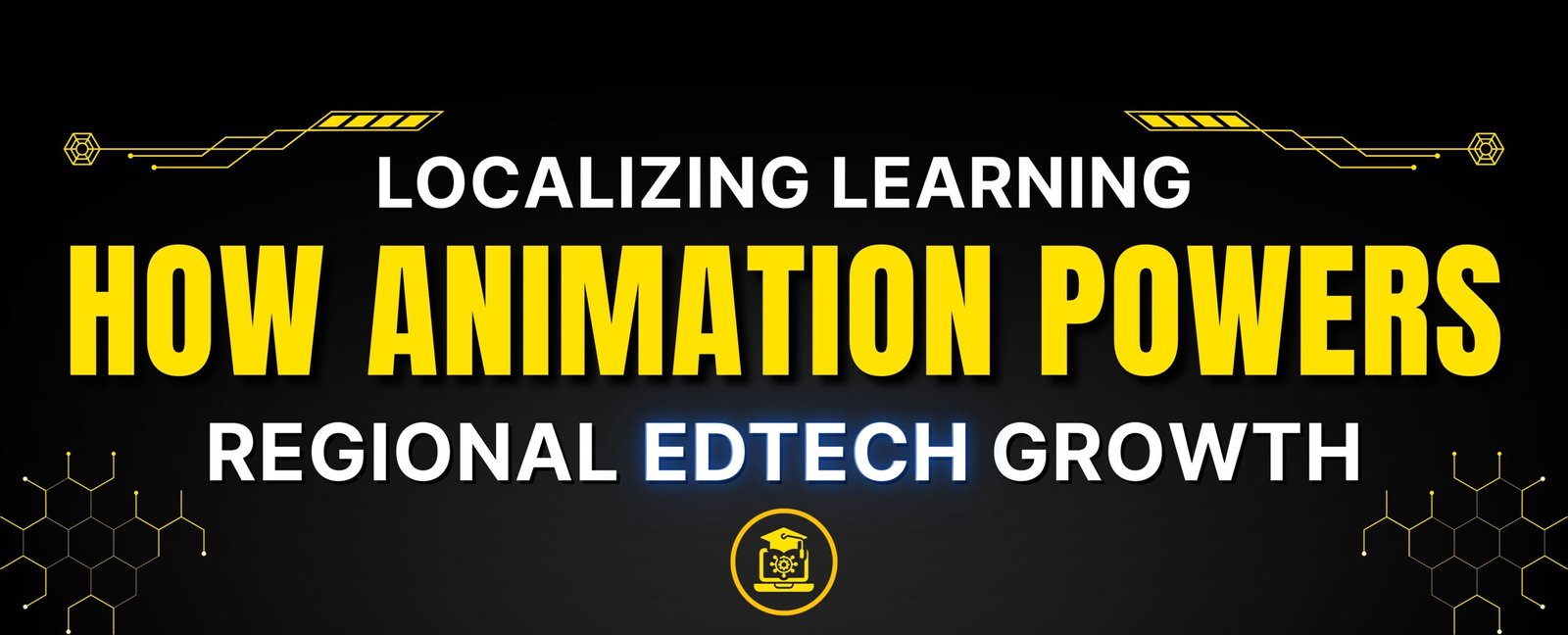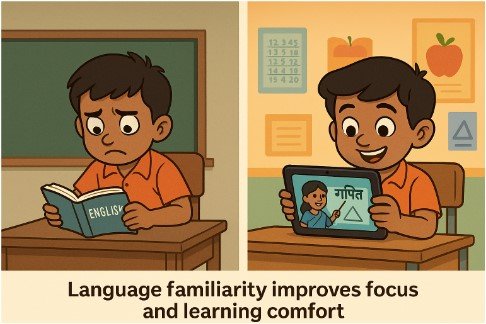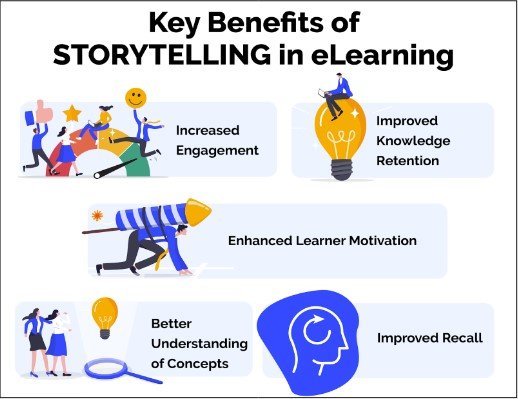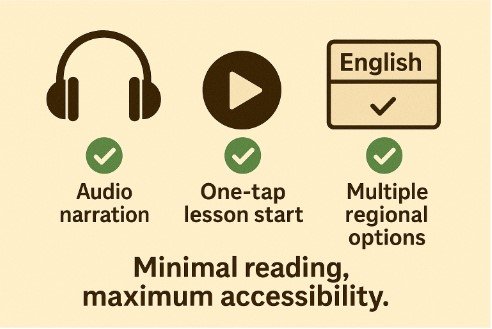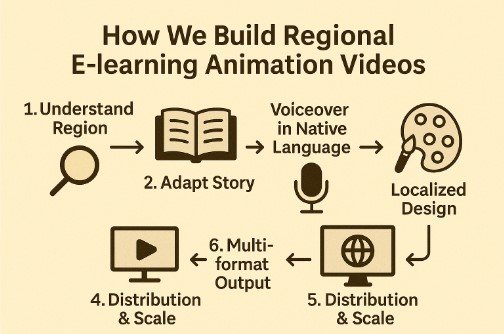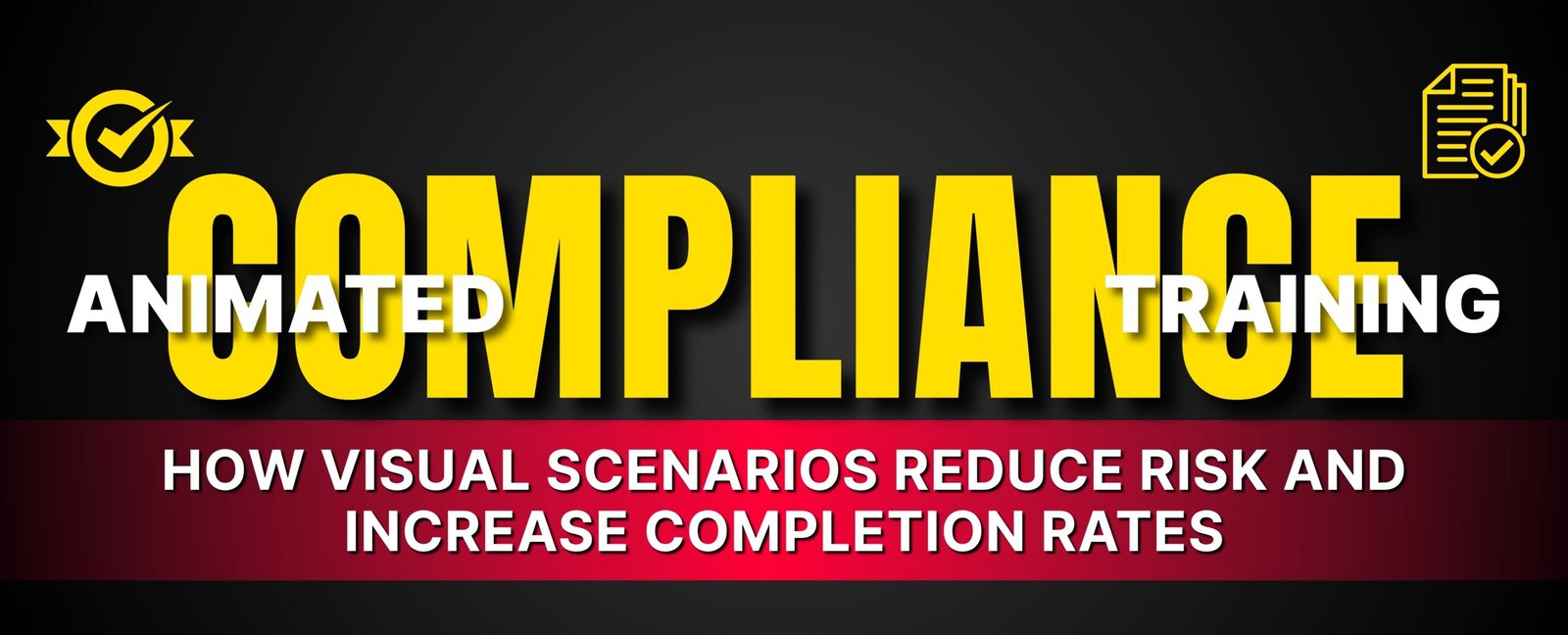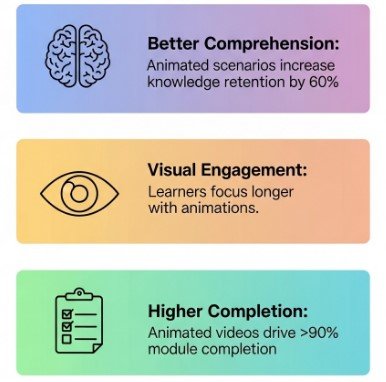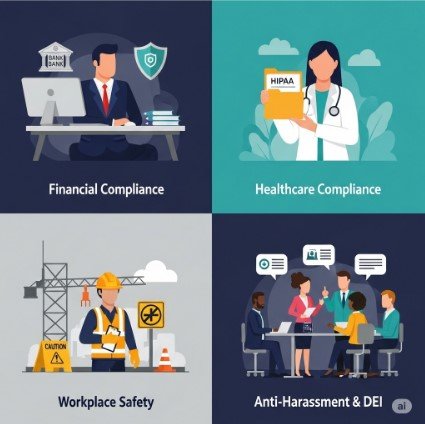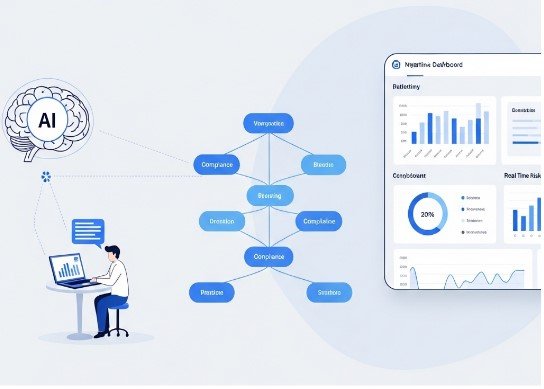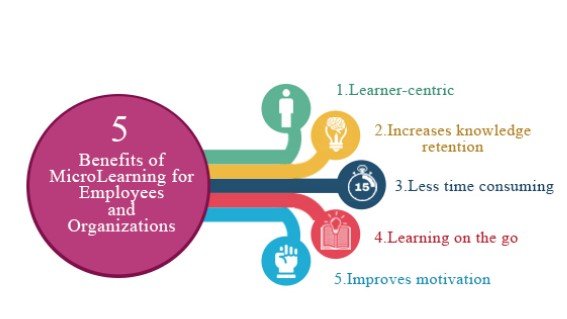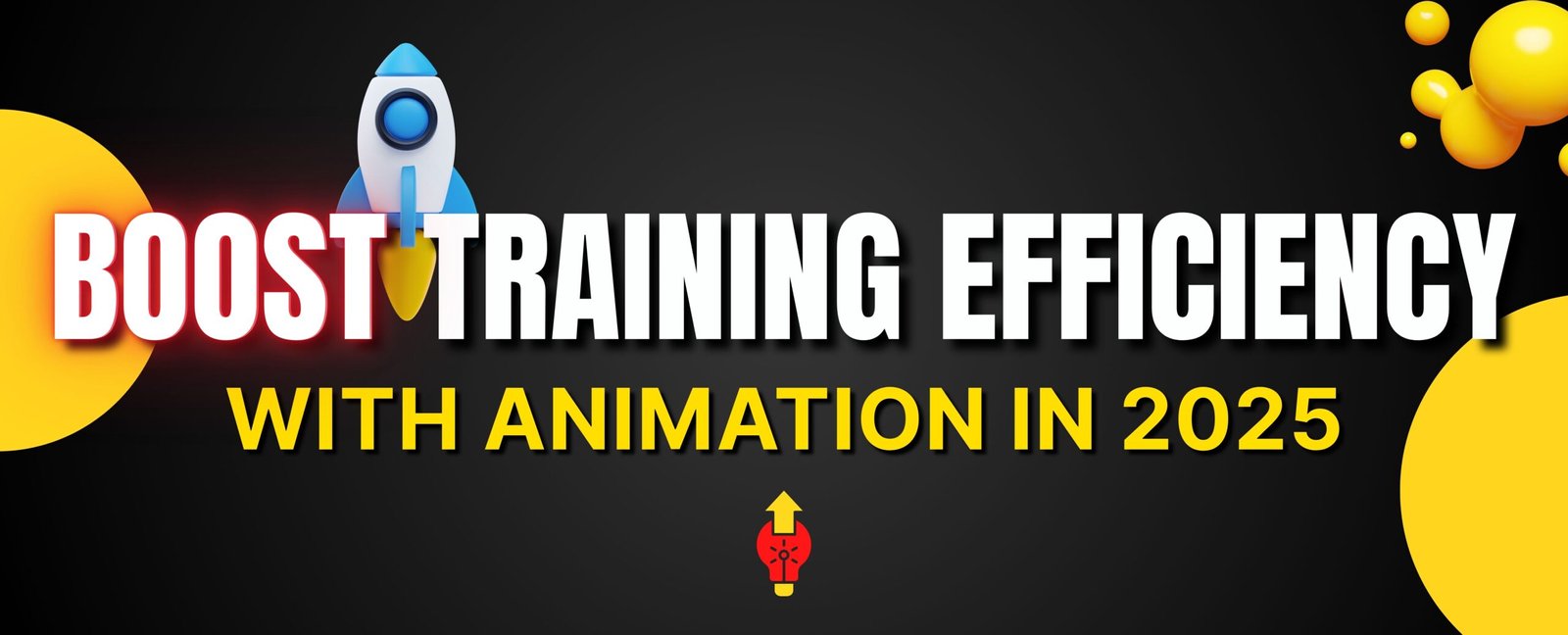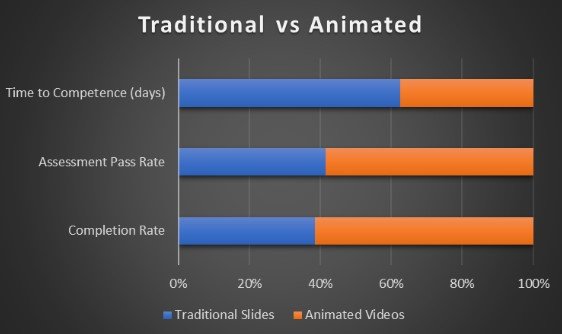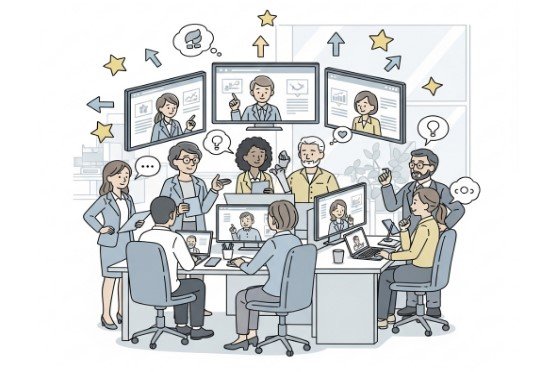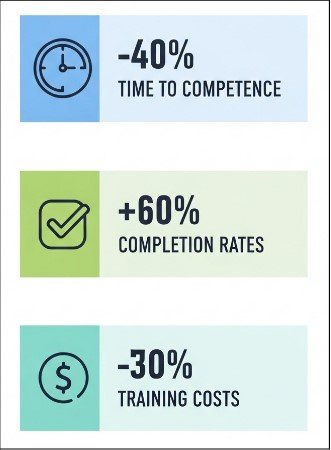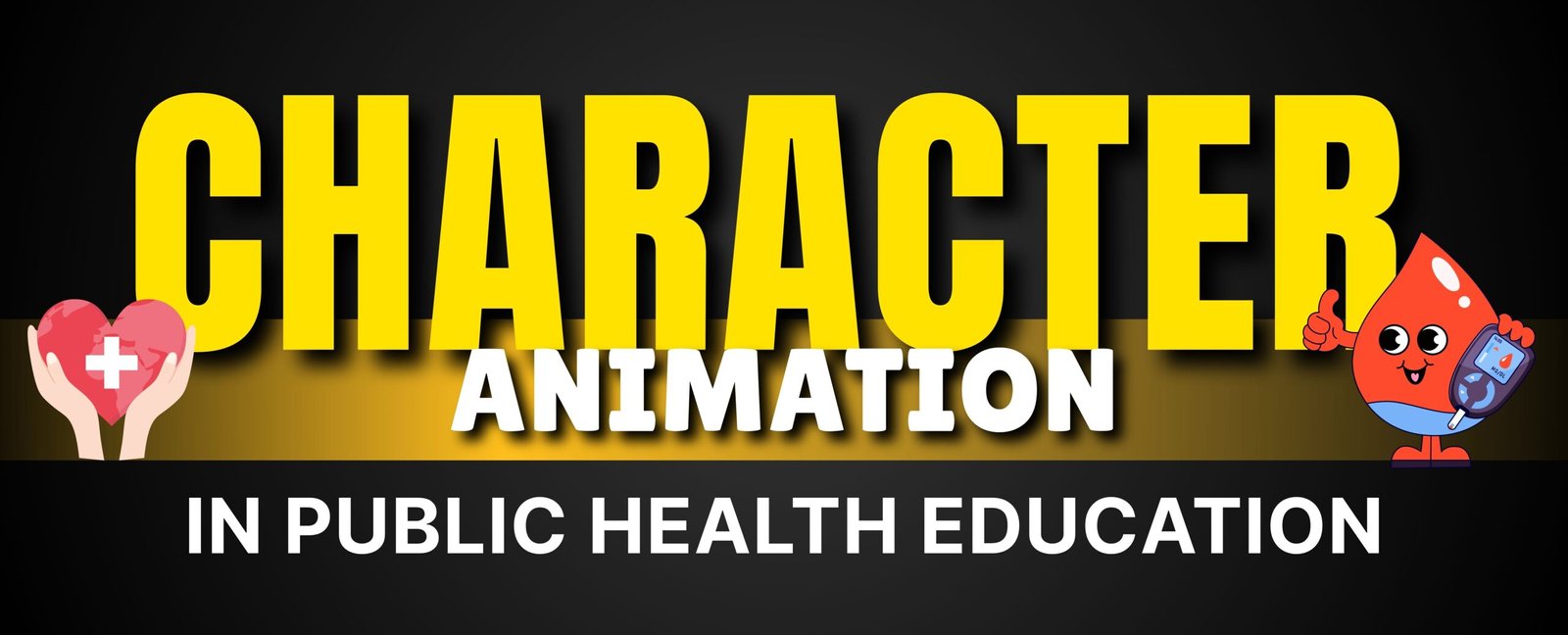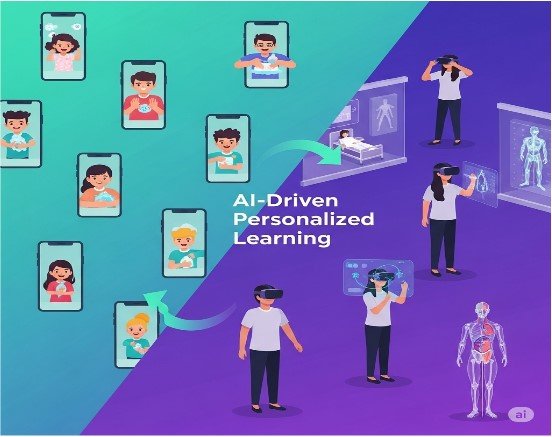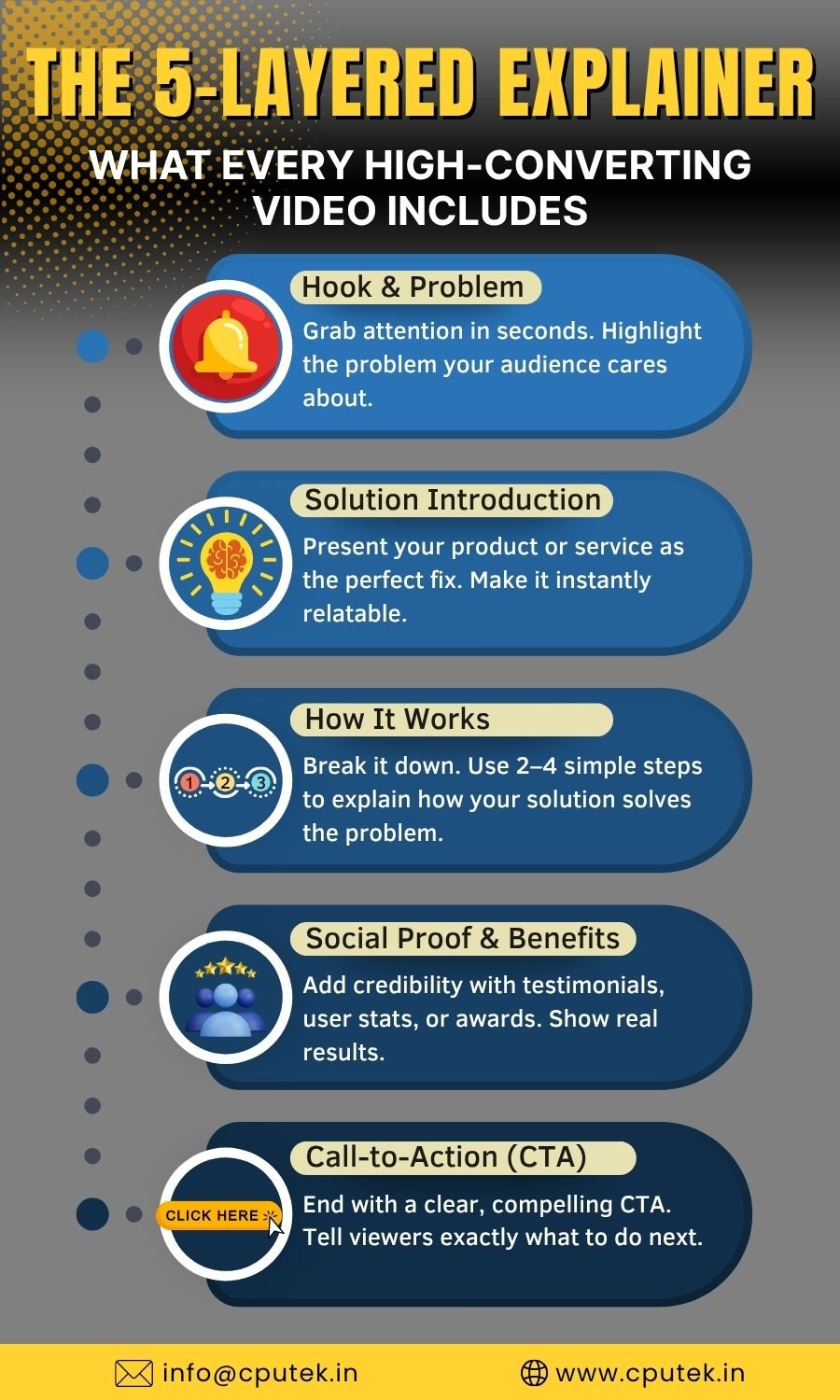Introduction
Remote onboarding shouldn’t feel like reading a boring manual. Yet many new hires report feeling lost, overwhelmed, or disconnected, delaying their confidence and contributions.
That’s why savvy teams and large enterprises now turn to animated eLearning video production services to create onboarding experiences that are engaging, structured, and easy to absorb. These videos humanize the process, accelerate learning, and reduce ramp-up time.
In fact, several real firms saw up to 40% faster time-to-productivity using interactive, animation-first onboarding.
This blog examines those wins and explains how your team can replicate them with animation-first content.
What Is Animated or Interactive Onboarding?
Before we dive into specific examples, let’s get clear on what we mean by animated onboarding.
It’s more than a welcome video. It’s a structured, interactive training flow built with video and animation, designed to simulate tasks, explain tools, and communicate culture in ways static content can’t.
Core elements often include:
- Character-led explainers and animated education videos
- Branching scenarios that reflect actual job decisions
- Personalized content aligned to role, region, or tools
- Micro-quizzes and response prompts built into the experience
And the impact?
According to Click‑Video, teams using interactive onboarding reported:
- 40% faster time-to-productivity
- 52% higher satisfaction
- 33% lower early turnover
- 47% better retention scores
From microlearning bursts to role-specific walkthroughs, the structure of animated onboarding varies based on company needs and team sizes. Some focus on culture-driven narratives, others on task simulations or tool navigation. This flexibility is what makes it one of the most adaptable formats in onboarding today – with clear reasons and use cases behind why more organizations are making animated onboarding videos.
What Research Says About Animated Onboarding
Wondering if these case studies are outliers or part of a broader trend? Here’s a data-backed look from third-party research into animated eLearning and video-based onboarding – a fast-growing focus for nearly every eLearning company in India and beyond.
- 80% completion rate for microlearning modules (typically 3–7 minutes long), compared to just 20% for traditional long-form courses.
- 50% to 60% increase in knowledge retention when content is broken into bite-sized animated bursts.
- Microlearning reduces training time by up to 50%, making onboarding less overwhelming.
- 80% of employees say microlearning helps them grasp new information faster.
- Organizations with structured onboarding, including animated or interactive modules – see 82% higher new-hire retention and 70% productivity gains.
Case Study 1: Fortune 500 Tech Firm
A global tech company was struggling with remote onboarding; new hires felt disconnected, and it was taking too long for them to get up to speed with just slide decks and video calls. They partnered with Click‑Video to make animated videos, featuring “day-in-the-life” journeys, culture scenarios, and decision-based modules tailored to specific roles.
Key Features –
- Interactive branching scenarios
- Quizzes and feedback built into modules
- Role-specific paths and immersive storytelling
Measured Results –
- 40% faster time‑to‑productivity
- 33% reduction in 90-day turnover
- 52% increase in new-hire satisfaction
- Estimated 320% ROI from lower recruitment costs
Why It Worked
By choosing to make animated videos tailored to a new hire’s role, they provided onboarding that felt personal, paced, and context-rich. The interactive video and animation sequences simulated real job tasks, allowing employees to “do” rather than passively “watch.”
This format supports knowledge retention and decision-making. The animated onboarding videos weren’t overloaded with jargon; instead, they mirrored a typical workday with scenarios that offered both relevance and practice. Through branching logic and narrative-driven choices, employees were better prepared from day one. And with content accessible anytime, learning was on-demand, especially valuable for remote teams in different time zones.
Ultimately, animated video creation helped turn a dry process into a dynamic one, improving not just speed to productivity but also early-stage employee morale.
Case Study 2: Salesforce Remote Onboarding
Salesforce recognized that remote employees missed out on cultural onboarding. They experimented with short, module-based animated content that introduced values, tools, and workflows.
Key Features –
- Weekly 1–2 minute animated clips
- Role-specific walkthroughs and tool demos
- Email drip delivery to maintain engagement
Measured Results –
- 40% faster productivity according to internal surveys
- 90% module engagement with onboarding emails
Why It Worked
Salesforce understood that onboarding remote workers wasn’t just about procedures; it was about connection. They opted to make animated videos that shared not only tools and workflows but also values, rituals, and people in the company. That human element is often lost in long-winded documentation or endless live calls.
Microlearning with animated education videos allowed new hires to absorb small, manageable chunks at their own pace. These videos introduced culture visually, something words alone struggle to do. Video and animation also removed ambiguity; concepts were shown through examples, actions, and character-driven motion, helping new hires remember information longer and feel less intimidated.
By embedding these short modules in their internal system, Salesforce created a consistent, scalable onboarding path that still felt tailored. The animated onboarding style created engagement that traditional formats struggled to match.
Case Study 3: Tata Consultancy Services (TCS)
Faced with the task of educating over 300,000 employees globally on compliance, TCS turned to animated education videos. They used localized motion‑graphic explainers instead of text-heavy modules.
Key Features –
- Modular, animated compliance walkthroughs
- Region-specific voiceovers and context
- Scenario-based learning with quiz checkpoints
Measured Results –
- 30% reduction in training duration
- 45% higher assessment scores versus text modules
Why It Worked
TCS faced one of the most common global onboarding challenges: compliance. Typically considered dry and complex, compliance content often suffers from low engagement. TCS made animated education videos that localized learning with characters, language, and examples that reflected each regional team’s context.
These were not generic animations. They were interactive, story-led sequences featuring real-world dilemmas that employees might face. This approach encouraged learners to apply what they saw, not just recall it. Scenario-based learning also helped reduce misinterpretation, something crucial in compliance training.
Through animated video creation, TCS scaled a high-stakes training requirement without overwhelming learners. Employees could revisit modules as needed, and testing comprehension became seamless. The videos also improved access for non-native English speakers through visual clarity and localization.
Animated onboarding here did more than shorten training time, it protected the business from costly errors and kept global staff aligned.
How Animated Onboarding Actually Looks
By now, we’ve explored how companies use animated onboarding to create clarity, consistency, and faster productivity. But what does this experience actually look like?
While the exact videos used in corporate onboarding are often considered their resources, here’s a publicly available sample that reflects the same structure and storytelling style used by leading companies like Salesforce and Fortune 500 tech firms:
Add first few seconds as a clip of this video if possible
What This Demo Captures
- Character-driven visuals that explain core concepts and workflows
- Click-to-explore sections that give new hires agency
- Role-based paths and personalization based on team, tools, or function
- Quiz loops and reflection points that reinforce retention
This type of animated video creation allows teams to train faster, remember longer, and feel more confident by the time they hit their first task.
Whether your team is remote, hybrid, or spread across geographies, these experiences are scalable, repeatable, and consistently engaging – a massive improvement over static PDFs or long screen-share recordings.
Why This Matters
When companies choose to make animated videos for onboarding, they’re investing in long-term outcomes:
- Shorter ramp-up times
- Higher early engagement
- Less hand-holding from HR and managers
- A stronger sense of belonging from day one
Across these examples, companies using animated onboarding consistently reported up to 40% faster time-to-productivity, regardless of industry or team size – confirming the strategic impact of animation-first training.
FAQs
1. What is animated onboarding?
Animated onboarding uses engaging video content, often with characters, scenarios, and interactivity, to guide new hires through company culture, tools, and workflows. It’s more effective than static documents or long calls, especially for remote teams.
2. How does animation improve remote onboarding?
Animation simplifies complex information, simulates real tasks, and keeps employees engaged. It supports visual learning, allows on-demand access, and boosts retention, making remote onboarding faster and more consistent.
3. Is animated onboarding expensive to implement?
While initial production costs vary, animated onboarding often delivers a strong ROI by reducing training time, improving retention, and minimizing early turnover, ultimately saving money and resources in the long run.
4. What types of content work best in animated onboarding?
Interactive explainers, tool walkthroughs, culture videos, branching scenarios, and microlearning quizzes work best. These formats combine clarity with engagement, helping new hires learn by watching, doing, and reflecting.
Conclusion
Animated onboarding is a practical solution to a real business challenge. As the case studies show, companies using video and animation to train new hires see faster ramp-up times, clearer communication, and more confident employees.
By replacing static materials with interactive, animated education videos, organizations make onboarding easier to access, easier to remember, and easier to scale, especially for remote teams.
If your goal is to help new employees feel ready, not just welcomed, animated video creation offers a proven, people-first approach that delivers results.

By day I create engaging content along with infusing high-volume, low-competition keywords strategically so that it gets loved by you and Google Crawler. Off the clock? I scroll for fresh ideas. (Don’t judge, gotta fuel the creativity!)







